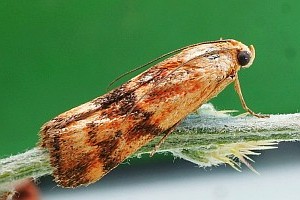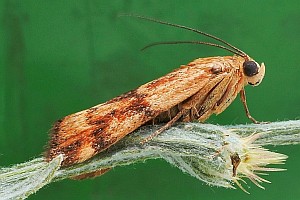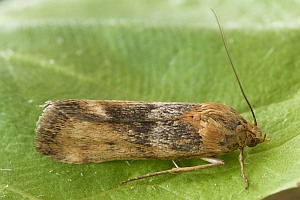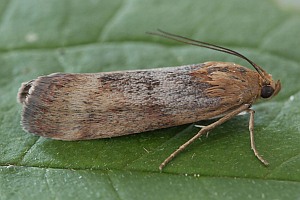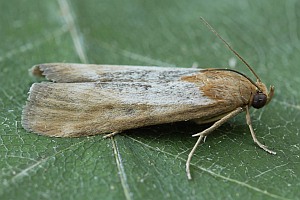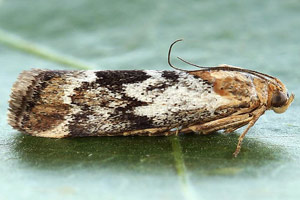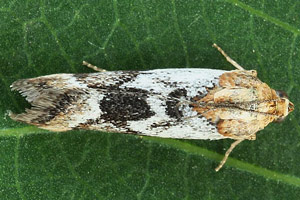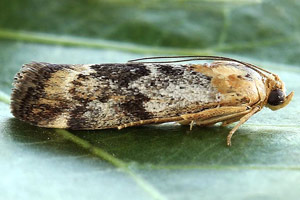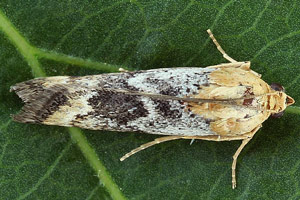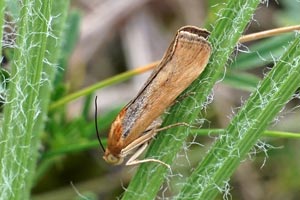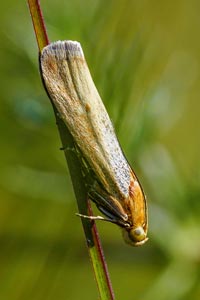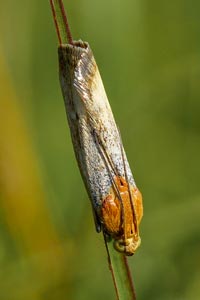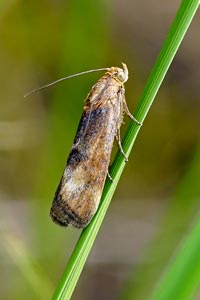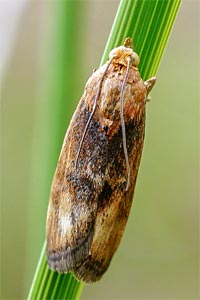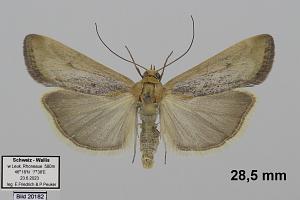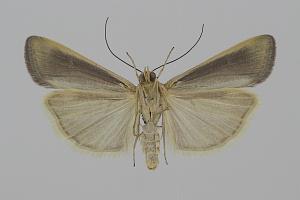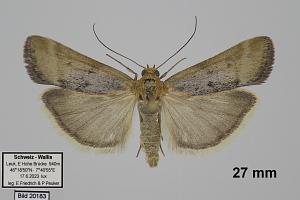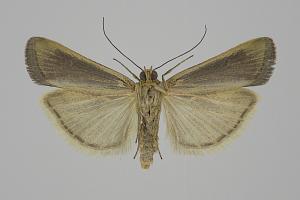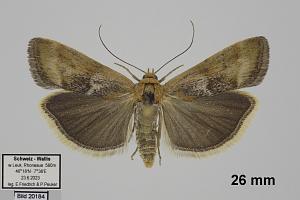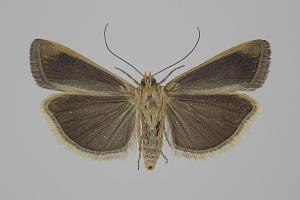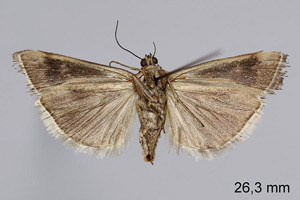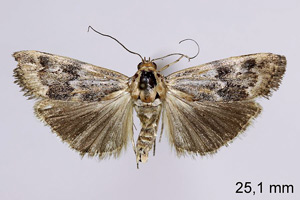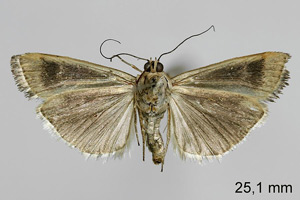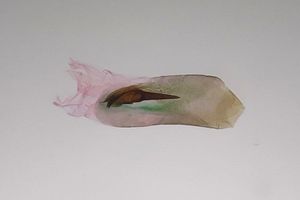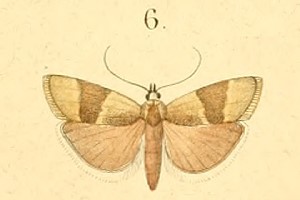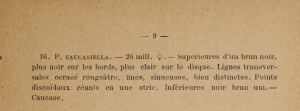

 +19Kontinente:EUAS
+19Kontinente:EUAS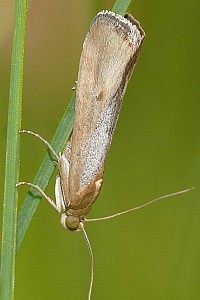
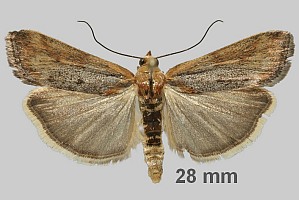
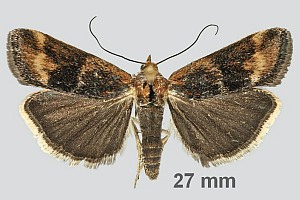
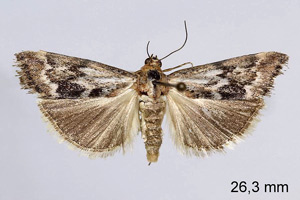
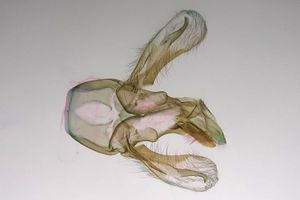
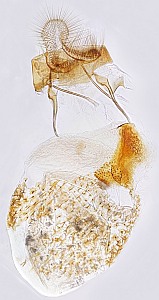
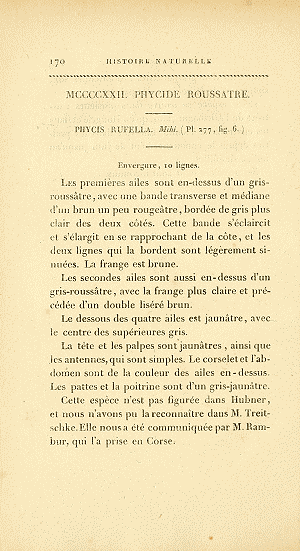
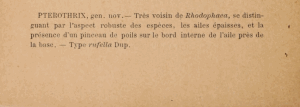
1. Lebendfotos
1.1. Falter
2. Diagnose
2.1. Männchen
2.2. Weibchen
2.3. Geschlecht nicht bestimmt
2.4. Genitalien
2.4.1. Männchen
2.4.2. Weibchen
2.5. Erstbeschreibung
2.6. Beschreibung als Pterothrix caucasiella
3. Weitere Informationen
3.1. Etymologie (Namenserklärung)
„rufus rot.“
impurella: „impurus unrein.“
3.2. Andere Kombinationen
- Phycis rufella Duponchel, 1836 [Originalkombination]
3.3. Synonyme
- Phycis impurella Duponchel, 1836
- Pterothrixidia impurella (Duponchel, 1836) [Nr. 05905 bei Karsholt & Razowski (1996)]
- Myelois luridatella Herrich-Schäffer, 1847
- Myelois contectella Zeller, 1848 [Nr. 05906 bei Karsholt & Razowski (1996); nach Leraut (2014) Synonym zu P. squalidella, nach Plant (2016) Synonym zu P. rufella]
- Pterothrixidia contectella (Zeller, 1848) [Nr. 05906 bei Karsholt & Razowski (1996); nach Leraut (2014) Synonym zu P. squalidella, nach Plant (2016) Synonym zu P. rufella]
- Myelois infuscatella Herrich-Schäffer, 1849
- Myelois tauricella Wocke, 1871
- Pterothrix caucasiella Ragonot, 1888 [Nr. 05907 bei Karsholt & Razowski (1996); nach Plant (2016) Synonym zu P. rufella]
- Pterothrixidia caucasiella (Ragonot, 1888) [Nr. 05907 bei Karsholt & Razowski (1996); nach Plant (2016) Synonym zu P. rufella]
- Pterothrix corsicella Ragonot, 1893
3.4. Taxonomie und Faunistik
Karsholt & Razowski (1996) führten Pterothrixidia rufella, P. impurella, P. contectella und P. caucasiella noch als getrennte Arten. Später wurden sie alle unter Pterothrixidia rufella zusammengefasst. Nach Leraut (2014) handelt es sich bei Pterothrixidia rufella (mit P. impurella als Synonym) und Pterothrixidia squalidella (mit P. contectella und P. caucasiella als Synonyme) aber um zwei getrennte bona species. Erstere ist in Nordafrika und im südwestlichen Europa verbreitet und erreicht nach Osten hin Ungarn. Letztere erreicht - von Osten her - Europa nur im Südosten. Insbesondere auf dem Balkan und umgebenden Ländern wäre demnach aber mit beiden Arten zu rechnen.
Plant (2016) verweist darauf, dass er die Tiere aus Bulgarien genitaliter nicht von südwesteuropäischen P. rufella trennen kann. Da Leraut (2014) die angeblichen Genitalunterschiede nicht benennt, bleibt nach den Zeichnungen nur ein Unterschied übrig: 2 Cornuti für P. rufella, 1 Cornutus für P. squalidella. Und Plant (2016) verweist darauf dass er in Bulgarien (und anderswo) nur Tiere mit 2 Cornuti fand. Er stellt also die Unterscheidbarkeit der beiden Taxa grundsätzlich in Frage und vermutet Präparations-Artefakte: "Leraut(2014) raised Pterothrixidia squalidella from synonymy on the basis of supposed consistency in better definition of cross lines on the forewings and “genitalia different”. P. squalidella is said to replace P. rufella from Central Europe to Turkey and Iran whilst P. rufella occurs in central south Europe, west to Iberia and north Africa. However, the two taxa overlap in Hungary and the former Republic of Yugoslavia. This is not a “new” species, and so no formal description was presented by Leraut; this is rather unfortunate because Leraut also notes that “uniformly light chestnut brown forms exist, however”. His earlier text for P. rufella asserts “transverse lights quite indistinct”. Regrettably, the differences in genitalia have to be inferred from the drawings because they are not described and therefore it is unclear which features may be important and which may be simple variation. Eversmann’s original description did not include genital characters. The aedeagus of P. squalidella is shown in Leraut (op. cit.) with one cornutus, that of P. rufella with two; perhaps we are to assume that this is the key difference? During 2015 I dissected a presumed P. rufella rufella male from Spain (Picos de Europa, 7.VII.2014, leg. Teresa Farino, in coll. Plant), in appearance rather similar to Leraut’s Plate 40, figure 6; this was found to have two cornuti, as expected. However, all the Bulgarian males that I have been able to dissect also have two cornuti, including one from Bezhanovo, near the Romanian border, on 5.V.2012, leg. Beshkov, which is quite devoid of any cross lines and appears identical to Leraut’s illustration of P. rufella rufella (Pl. 40 fig. 12). To date, I have not yet found any examples with a single cornutus, although some material mentioned in the list below is not currently available. Within the genital capsule of the male, the projections from the valva have acute tips in the drawing of P. squalidella (Leraut’s text figure 119a) those of rufella in figure 119b are shown acute on one side and rounded on the other; I can make my specimens change shape in this area by varying pressure on the glass cover slip when making a microscope slide! I have observed that other characters, such as the form of the gnathos, of the anellus and the curvature of the projections on the valva also can be varied by alteration of pressure on the glass cover slip of the microscope slide. My overwhelming conclusion is that if P. squalidella is a valid species it has not yet been found in Bulgaria, and all Bulgarian material currently known is here assigned to P. rufella. Consequently, all data are combined into the single distribution map, but I nevertheless separate the records into three groups, as below, in case this proves useful at a later date."
3.5. Faunistik
Zu Österreich stellt Huemer (2013) fest: "Die Art wurde von Huemer & Tarmann (1993) mangels überprüfbarer Belege aus der Landesfauna gestrichen, und es liegen keine neueren Daten vor, die ein Vorkommen bestätigen."
(Autor: Erwin Rennwald)
3.6. Publikationsjahr der Erstbeschreibung
Woodward (1922: 379) [Digitalisat auf biodiversitylibrary.org] teilt die Publikationsjahre des Bandes mit. Demnach sind die Seiten 1-240 und die Tafeln 267-280 1836 erschienen, die Seiten 241-387 sowie die Tafeln 281-286 1837.
(Autor: Jürgen Rodeland)
3.7. Literatur
- Erstbeschreibung: Duponchel, P.-A.-J. (1836-[1837]): Histoire naturelle des lépidoptères ou papillons de France. Tome dixième: 1-384, [385]-[387], pl. CCLXVII-CCLXXXVI. Paris (Méquignon-Marvis).
- Huemer, P. (2013): Die Schmetterlinge Österreichs (Lepidoptera). Systematische und faunistische Checkliste. – 304 S. (Studiohefte 12); Innsbruck (Tiroler Landesmuseen-Betriebsgesellschaft m.b.H.).
- Huertas-Dionisio, M. (2016): Estados inmaturos de Lepidoptera (LI). Pterothrixidia rufella (Duponchel, 1836) en Huelva, España (Lepidoptera: Pyralidae, Phycitinae). — SHILAP Revista de Lepidopterología 44 (174): 251-257 [PDF auf redalyc.org].
- Leraut, P. (2014): Moths of Europe. Volume 4. Pyralids 2. - 441 S.; Verrières-le-Buisson (N.A.P Editions).
- Plant, C. W. (2016): An Annotated Systematic, Synonymic and Distributional Checklist of the Pyraloidea of Bulgaria (Lepidoptera, Crambidae & Pyralidae). — Neue Entomologische Nachrichten 72: 1-231.
- Beschreibung als Pterothrix caucasiella: Ragonot, E.-L. (1888): Nouveaux genres et espèces de Phycitidae & Galleriidae: 1-52. Paris (Imprimerie Grandremy et Henon).
- Woodward, B. B. (1922): Catalogue of the Books, Manuscripts, Maps and Drawings in the British Museum (Natural History). Vol. VI. Supplement: A–I: i-iv, 1-511, 1-48. London.




















